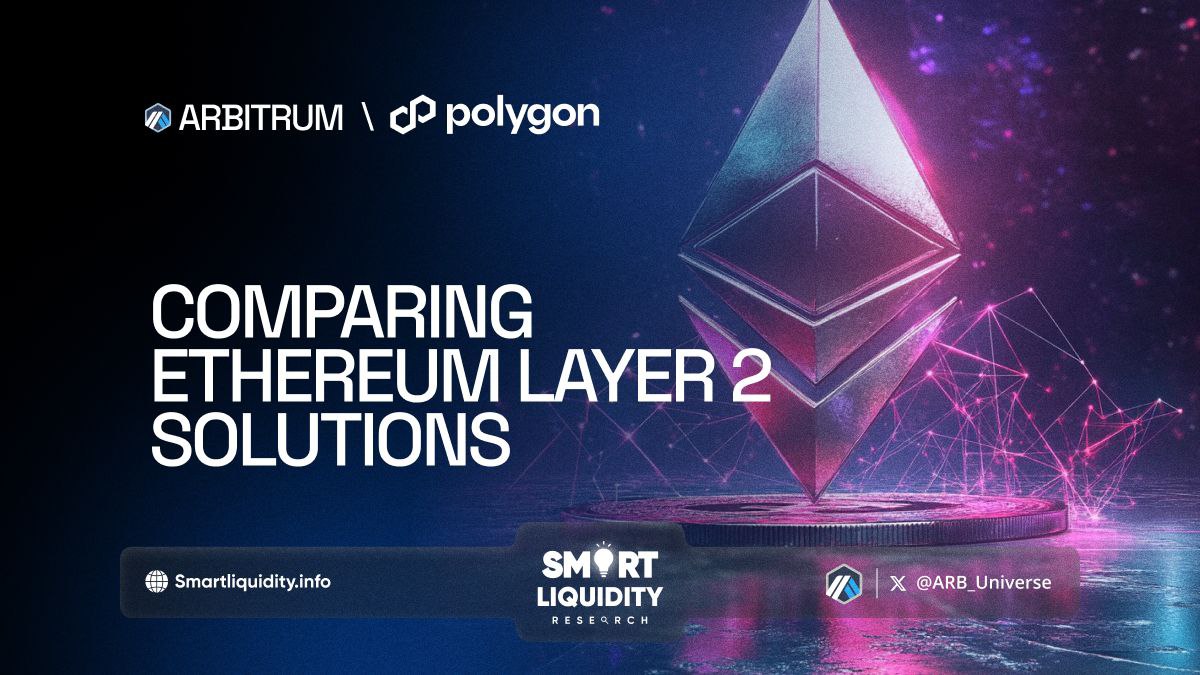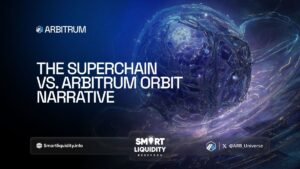Comparing Ethereum Layer 2 Solutions: Arbitrum vs. Polygon


Comparing Ethereum Layer 2 Solutions: Arbitrum vs. Polygon! As Ethereum continues to dominate the blockchain space, scalability remains one of its biggest challenges. With increasing demand for decentralized applications (dApps), the network often experiences congestion and high gas fees, which impact user experience and developer adoption.
To address these issues, Layer 2 (L2) solutions have emerged as a way to enhance scalability while maintaining Ethereum’s security and decentralization.
Among the leading Layer 2 solutions are Arbitrum and Polygon, both of which aim to solve Ethereum’s scalability issues but use different approaches to achieve their goals. In this article, we will dive into a comparison of these two prominent L2 networks, examining their technologies, use cases and benefits.
What is Layer 2?
Layer 2 refers to a secondary framework or protocol built on top of an existing blockchain (Layer 1). Layer 2 solutions offload some of the transaction burdens from the main chain, allowing for faster and cheaper transactions. The Ethereum ecosystem has been particularly focused on developing Layer 2 solutions to address its network bottlenecks without compromising decentralization or security.
Arbitrum: Rollups for Efficient Scaling
Arbitrum is a leading Layer 2 scaling solution that uses Optimistic Rollups to process transactions faster and more efficiently. In this model, transactions are executed off-chain, and the result is then posted to the Ethereum blockchain. This minimizes the computational load on the Ethereum mainnet while keeping costs low for users.
Some key features of Arbitrum include:
- High compatibility with Ethereum smart contracts
Developers can easily deploy their Ethereum smart contracts on Arbitrum without needing to make significant changes. - Optimistic Rollups
These assume transactions are valid by default, reducing the need for complex computation until a challenge occurs, thus improving efficiency. - Lower gas fees
By processing transactions off-chain, users enjoy substantially lower fees than they would on Ethereum Layer 1.
Polygon: A Versatile Scaling Platform
Polygon takes a more multi-faceted approach to scaling Ethereum. Originally known as Matic Network, Polygon has evolved into a full-fledged scaling platform offering a variety of solutions, including Plasma Chains, ZK-Rollups, and its popular Proof-of-Stake (PoS) chain.
Key features of Polygon include:
- Multi-chain scaling solution: Polygon supports different types of Layer 2 technologies, giving developers flexibility in how they want to scale their dApps.
- Sidechains: Polygon’s PoS sidechain operates parallel to Ethereum, enabling fast and low-cost transactions with full compatibility for Ethereum dApps.
- ZK-Rollups: Zero-Knowledge Rollups bundle many transactions together and use cryptographic proof to ensure their validity, reducing the computational strain on Ethereum.
Polygon has gained massive traction due to its versatile scaling approach, attracting major dApps, NFT platforms, and gaming projects.
Comparing the Two: Arbitrum vs. Polygon
While both Arbitrum and Polygon aim to alleviate Ethereum’s scalability challenges, they do so using different techniques, which leads to distinct advantages in certain scenarios.


Use Cases and Adoption
Both Arbitrum and Polygon are rapidly gaining adoption, but their use cases tend to vary based on the projects they attract. Arbitrum has gained a foothold in the decentralized finance (DeFi) space due to its low fees and high security, making it an attractive choice for DeFi applications looking to scale. On the other hand, Polygon has become a popular choice for gaming, NFTs, and more general-purpose decentralized applications, benefiting from its diverse scaling options and easy-to-use platform.
The Future of Layer 2 Solutions
As Ethereum continues its transition to Ethereum 2.0 and explores additional scaling mechanisms such as sharding, Layer 2 solutions like Arbitrum and Polygon will remain crucial in the short to medium term. These platforms help relieve congestion on the mainnet, reducing transaction costs while preserving the security guarantees of Ethereum.
In conclusion, while both Arbitrum and Polygon provide excellent Layer 2 solutions, their approaches and specializations offer distinct benefits. Arbitrum is ideal for high-security, cost-sensitive DeFi projects, while Polygon shines in diverse applications, including NFTs and gaming, thanks to its versatility. As these Layer 2 ecosystems continue to grow, they will play a critical role in scaling Ethereum to meet global demand.




